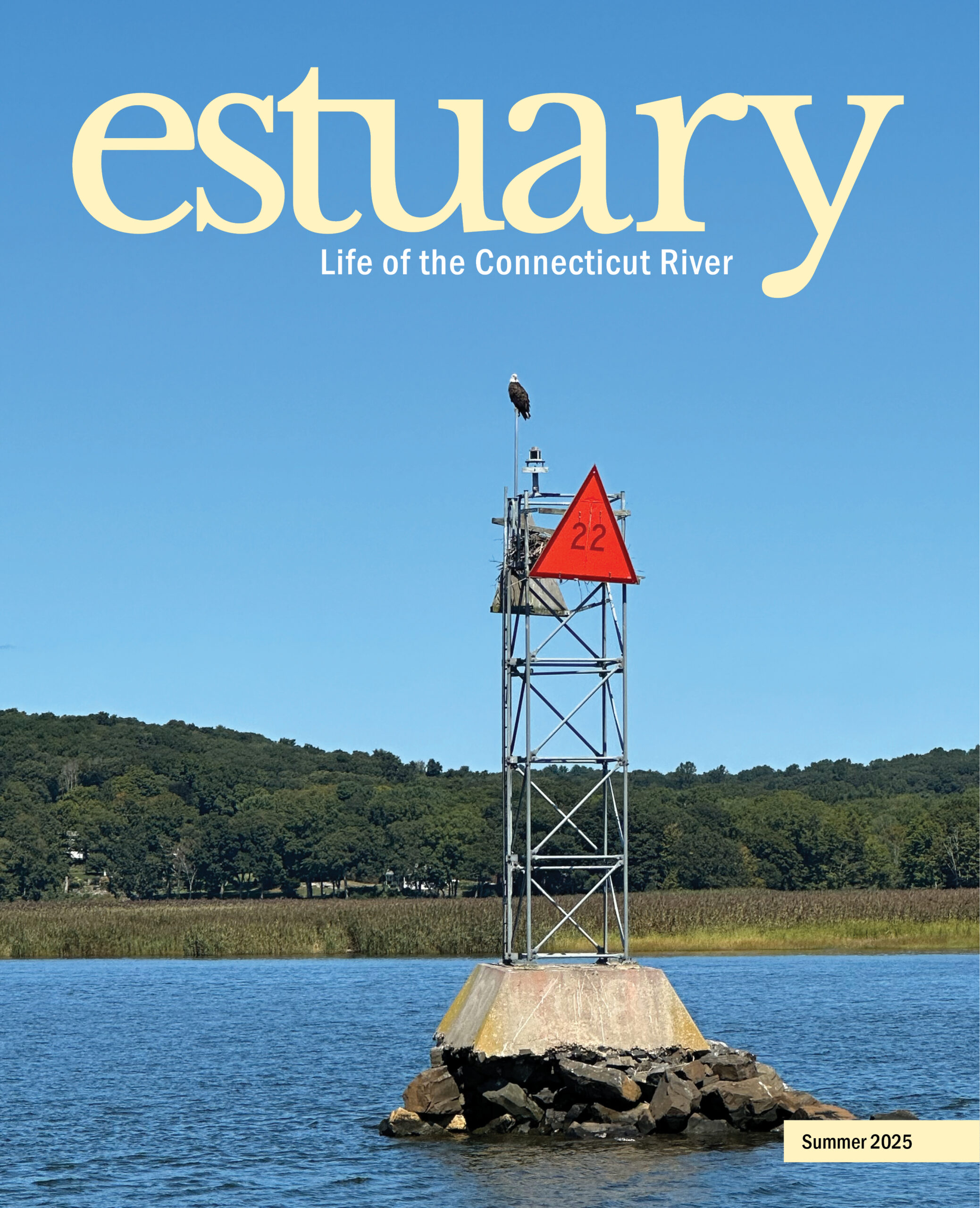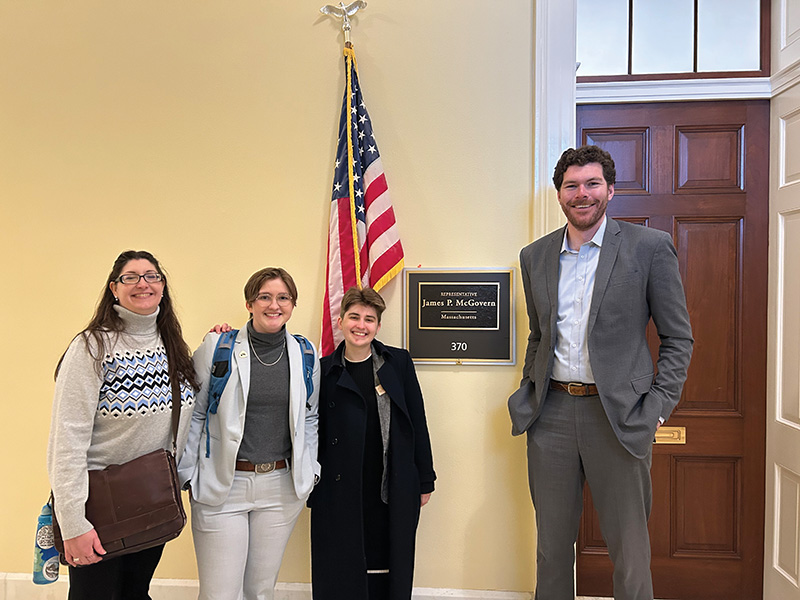 This article appears in the Summer 2025 issue
This article appears in the Summer 2025 issue

Let Our Mission Be Our Guide
By Amy Lindholm and Markelle Smith
Major policy changes affecting the irreplaceable network of public lands, which the federal government is charged with protecting unimpaired for future generations, have been implemented by the second Trump administration. These executive branch decisions have had a ripple effect on the network of public and private partners that comprise the Connecticut River Watershed Partnership (CRWP). As much of our project work is done in partnership, we’re seeing impacts on federal, state, and municipal colleagues and projects across all four watershed states.
Direct impacts felt by our federal agency partners have included the firing of probationary employees, whose research and expertise we rely on when implementing land and water stewardship activities on our regional mosaic of public and private lands. Since January 2025 we have seen the termination of a substantial number of Conte Refuge staff and their colleagues across the US Fish and Wildlife Service, National Park Service, US Forest Service, National Oceanic and Atmospheric Administration, and other federal agencies with probable reductions in force to come.
The Northeast Regional Office of the US Fish and Wildlife Service (USFWS), responsible for the service’s activities from Maine to Virginia, let go thirty-six probationary employees in February. We also learned that the Northeast Regional Office, which currently hosts approximately 200 USFWS and other federal agency staff in Hadley, Massachusetts, is on a list of federal offices with “soft leases” and is therefore slated to close on August 31, 2025. (See related story, page 30.)
The first month of President Donald Trump’s second administration has presented significant risk to the Silvio O. Conte National Fish and Wildlife Refuge in advancing its mission: to conserve, protect, and enhance the abundance and diversity of native plant, fish, and wildlife species and the ecosystems on which they depend throughout the 7.2 million-acre Connecticut River Watershed. The Conte Refuge currently stewards more than 50,000 acres in twenty-two divisions across the primary watershed states of Connecticut, Massachusetts, New Hampshire, and Vermont. Recently Conte Refuge staff learned of the suspension of $1.5 million of a $25 million grant funded by the Inflation Reduction Act (2022) intended for northern forest restoration across several national wildlife refuges. These funds were slated for critical habitat improvement projects meant to ameliorate the impacts of climate change on our northern forest species and infrastructure repairs to allow the public safe access to the spectacular recreation opportunities the refuge offers in its Nulhegan and Pondicherry divisions.
Watershed partners like the Connecticut River Conservancy now face major cuts to the funding of their mission-based priorities, including suspension of an $11.5 million grant from the USDA’s Regional Conservation Partnership Program (RCPP) implemented through the Natural Resources Conservation Service. These funds were intended to restore stream and forest ecosystems in the New Hampshire portion of the Connecticut River watershed over the next five years, but the funds originated with the Inflation Reduction Act and are therefore frozen. This watershed-based nonprofit organization will need to find funding from state-based or private sources to advance this important work.
Impacts are also being felt by land trust partners like Kestrel Land Trust, based in the Connecticut River valley of Massachusetts, which led an inspired and highly collaborative group of land trusts in western Massachusetts to identify more than ten thousand acres of forest land that willing landowners are interested in conserving. Without the federal funding they’d hoped to access, they will need to pivot to locate alternative funding sources to make their vision of connected wildlife habitat in this part of the watershed a reality.

“Hike the Hill” annual visit in Washington, DC, February 2025. (L to R) Amy Lindholm, Appalachian Mountain Club and LWCF Coalition; Miriam Maistelman, Appalachian Mountain Club; Rae Ettenger, Appalachian Mountain Club and Advocacy Committee Chair, CRWP; and John Swords, Senior Legislative Assistant to Congressman Jim McGovern (MA). Image credit: Appalachian Mountain Club.
To meet these challenges, CRWP members are working to find creative solutions to respond to the shifting landscape and to communicate the impacts that policy and funding decisions are having in our communities. We see our work as threefold and call on all those who live in and love the watershed to help wherever possible.
First, we must effectively communicate the real world, on-the-ground impacts of decisions and actions made by the Trump administration to our members of Congress and the constituents they represent. This includes the importance of public lands as the driver of a $1.2 trillion outdoor economy. Representatives in Congress must be provided with facts about the economic impacts to local watershed communities caused by the withdrawal of federal investments and the inefficiencies and ancillary impacts to other partners created by the nature of these actions at the federal level.
Second, we must communicate that public-private partnerships are an incredibly efficient and cost-effective way of building resilience to extreme weather, protecting clean air and water, and providing critical recreation access to millions of Americans. We value our federal partners, and they need our support. As Chris Campany, Executive Director of Windham Regional Planning Commission and Chair of the Executive Committee of the CRWP, recently said, now is the time for networks of public and private partners like ours to tell the stories of what’s happening to people and communities in the watershed. Greater responsibility will fall to partners, such as NGOs, that have the ability to speak freely. Speak up with us and make your voices heard.
Third, we must look to fill the funding gap being created by reduced federal investment in the short term, by pivoting to state, local, and private funding of land conservation, restoration, research, and stewardship activities. We know that our communities can and will come together in difficult times to innovate and build from our mutual and complementary strengths. The CRWP is planning to convene this spring and summer to identify how our “group of groups” can best serve as a clearinghouse and resource to individual partner organizations and agencies who have been impacted by the recent federal disinvestment in our core conservation work.
During challenging times like these it’s our region’s steadfast commitment to the work and our missions that will serve as our north star, inspiring and guiding us to continue to collaborate on behalf of our shared goal of improving the health and well-being of the Connecticut River watershed and the communities that live in and are served by it.
Amy Lindholm is Director of Federal Affairs and Conservation Funding for Appalachian Mountain Club and National Coordinator for the Land and Water Conservation Fund Coalition. Markelle Smith is Director of the Connecticut River Watershed Partnership, and Mass Audubon is the fiscal agent of the CRWP.
Collaboration in the watershed between Mass Audubon, Audubon Vermont, and Connecticut River Conservancy, all members of the Connecticut River Watershed Partnership, is being supported in part by a 2024–2026 grant from The Watershed Fund, parent of Estuary magazine.
